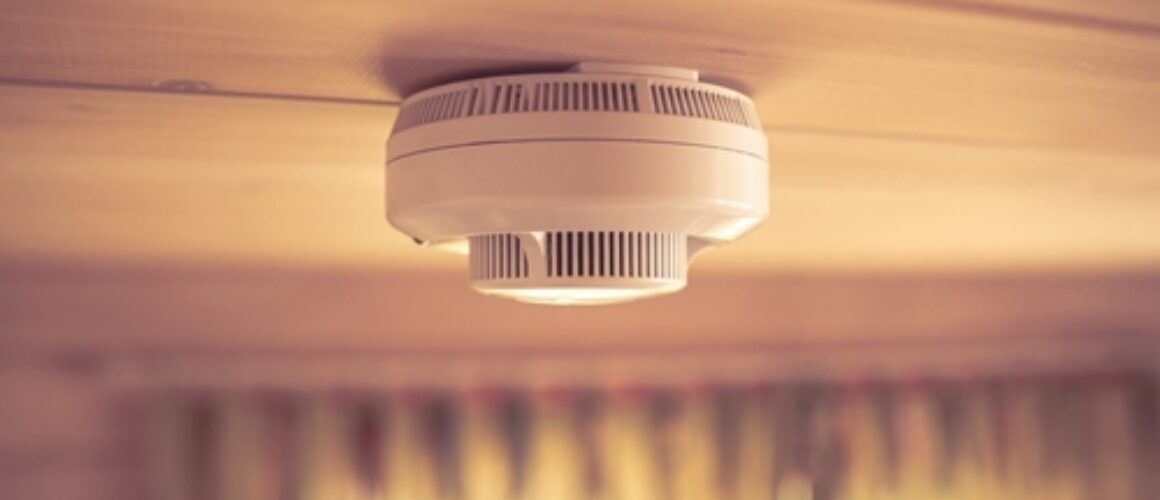Carbon Monoxide vs. Smoke Detectors: Key Differences and Functions
When it comes to protecting your home or business from potential fire hazards, having the right detection systems in place is crucial. Two commonly used systems are carbon monoxide (CO) detectors and smoke detectors. While they both serve the purpose of alerting occupants to potential dangers, they have distinct differences in terms of functionality and purpose. In this blog post, we will explore the key differences between carbon monoxide and smoke detectors, and highlight their unique functions.
What is Carbon Monoxide?
Carbon monoxide is an odourless, colourless gas that can be deadly if inhaled in high concentrations. It is produced by the incomplete combustion of fossil fuels, such as gas, oil, or coal. Common sources of carbon monoxide in homes and businesses include faulty heating systems, blocked chimneys, or faulty appliances.
The Dangers of Carbon Monoxide
Carbon monoxide is often referred to as the “silent killer” because it is virtually undetectable without the use of a detector. When inhaled, carbon monoxide molecules bind to haemoglobin in the blood, preventing oxygen from being transported to vital organs. This can result in severe health complications or even death.
The Purpose of Carbon Monoxide Detectors
Carbon monoxide detectors are designed to alert occupants when the concentration of carbon monoxide reaches a dangerous level. They use electrochemical sensors to detect and measure the presence of carbon monoxide in the air. When the level of carbon monoxide exceeds a certain threshold, the detector will emit an audible alarm, allowing occupants to evacuate the area and seek fresh air immediately.
How Do Smoke Detectors Work?
Smoke detectors, on the other hand, are designed to detect the presence of smoke particles in the air. They contain either ionisation or photoelectric sensors that can detect the smallest traces of smoke. When smoke particles enter the detector, the sensors trigger an alarm to alert occupants of a potential fire.
Different Types of Smoke Detectors
There are two main types of smoke detectors: ionisation smoke detectors and photoelectric smoke detectors. Ionisation smoke detectors are more responsive to flaming fires, while photoelectric smoke detectors are more sensitive to smouldering fires. Some advanced smoke detectors combine both types of sensors to provide comprehensive fire detection.
The Importance of Having Both Systems
While carbon monoxide and smoke detectors have different purposes, it is essential to have both systems in place for comprehensive protection. Fires can produce carbon monoxide as a byproduct, and high levels of carbon monoxide can indicate the presence of a fire. Therefore, having both detectors ensures that you are alerted to any potential fire hazards, whether it be from smoke or carbon monoxide.
Choosing the Right Detection Systems
When selecting carbon monoxide and smoke detectors for your home or business, it is crucial to choose reliable and high-quality products. AICO, a leading manufacturer in fire detection systems, offers a wide range of carbon monoxide and smoke detectors that are known for their reliability and durability. Their detectors are designed to meet the highest industry standards and provide accurate detection capabilities.
AICO’s carbon monoxide detectors are equipped with advanced electrochemical sensors that can detect low levels of carbon monoxide, ensuring early detection and prevention of exposure to this deadly gas. Their smoke detectors utilise state-of-the-art ionisation or photoelectric sensors to provide fast and reliable detection of smoke particles, giving you the earliest possible warning of a fire.
Additionally, AICO’s detectors are easy to install and maintain. They come with user-friendly features such as test buttons and LED indicators to ensure proper functioning. Some models also offer wireless connectivity, allowing for easy integration with other fire detection systems or smart home devices.
By choosing AICO’s carbon monoxide and smoke detectors, you can have peace of mind knowing that you have reliable and effective protection against the dangers of carbon monoxide and fires. These detectors are designed to save lives and protect property, making them an essential investment for any home or business.
In conclusion, carbon monoxide and smoke detectors are crucial components of any fire safety system. Carbon monoxide detectors protect against the silent killer, while smoke detectors provide early warning of potential fires. By having both systems in place, you can ensure comprehensive protection for yourself, your family, and your property.




